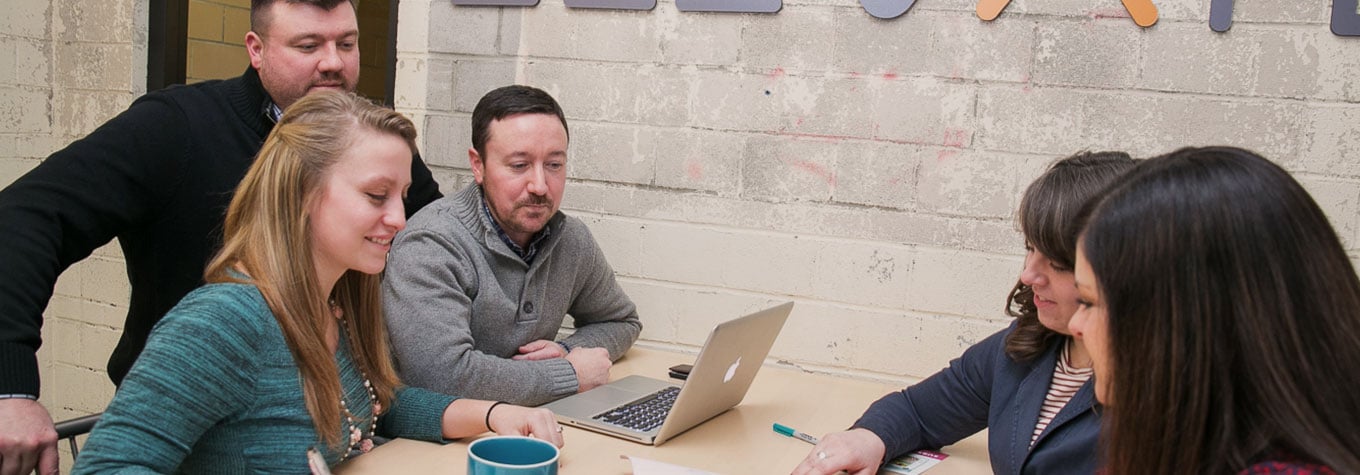Think of the last brainstorming meeting you attended. It may have gone something like this: Everyone gathers in a room with a whiteboard. You get a brief description of the task at hand, and then everyone stares at each other and the blank board until someone comes up with an idea. Then, other people latch on, and the loudest person in the room usually wins. If you’re quiet or introverted, you might barely contribute.
You leave the meeting thinking, “There has to be a better way!”
Good news! There are actually seven better ways, along with some must-do actions, to have a better brainstorm.
1. Come up with the worst idea possible. Really.
Ask yourself and your team, “What could we never do? What’s impossible for us to pull off? What would our boss put the kibosh on?” These questions get people thinking and focused on the topic at hand, instead of what they’re having for lunch. They also help you tap into your creativity and push yourself outside of your normal box. You might get some off-the-wall suggestions, but this is a good way to start a meeting off, get ideas flowing, eliminate the duds right off the bat, and then refine later.
2. Figure-storm. For example, "If I was Kayne West, what would I do?"
You can use any public figure or well-known person for this method. They could be the CEO of your company, they could be a positive role model, they could even be a historical figure. If you want to use this to refine your ideas, one suggestion is to pose this question using one of your marketing personas. Revisit your persona and try to put yourself in their shoes. How would they engage with or respond to your ideas? Would your idea accomplish the right goals to reach the right people?
3. Word association.
You may have used this method at some point in time, and it's a good way to start a brainstorm. You start with one word related to the topic you’re brainstorming, and then collect associated words. A fun way to switch this up and infuse some energy into your brainstorming session is to grab a ball, toss the ball around the room, and the person who catches it says the first word that comes to mind. One person acts as a scribe, collecting all of the words, without judging if they’re "right" or "wrong." This is a way to get a unique collection of words to use to spark ideas.
4. Time travel.
Ask yourself and your team, “If I was 100 years in the future, what would I do?” or “If this project was taking place in the '80s, what would it look like?” This method can help you think outside the box and open your mind up to more creative, unlimited ideas. For example, Lyft recently ran an ad featuring Jeff Bridges traveling the Oregon Trail with the tagline, "It matters how you get there." This spot is part of a campaign that focuses on iconic travel journeys, and is a great example of how the time travel approach can help you think of your project in new ways.
5. Teleportation.
This method is similar to the time travel technique, but instead of changing the time period, you change the place. What would you do if you had to complete this project on an island? What if you were doing this project at Hogwarts? Asking questions like this may seem impractical at first, but it helps you start thinking creatively. From there, you can ask other questions to help you narrow your focus. For example, if you wanted to promote a new product on a desert island, you could write messages in the sand. This could evolve into promoting your new product at a trade show and writing messages on the floor. Throughout your conversation, just remind your team of the project goals to make sure your ideas are relevant.
6. Starbursting.
With this technique, you brainstorm any possible questions your target audience might have about your topic/project. This is particularly good for coming up with content ideas as you’re building your inbound marketing content. You start by drawing a six-pointed star with the questions: who, what, why, where, when, and how at each of the points. From each of the points, drill down to come up with more questions. For example: “How do I use this product/service? What time/cost is involved? Who else in my company needs to be involved? Why hasn't my competition already done this?” etc. You don’t need to try to answer these questions as you go along, just focus coming up with more questions. If you’re using this technique for content marketing later on, you can then evaluate and create content to answer these questions.
7. Brainwriting.
This next method is great for a group because it gets both introverts and extroverts equally involved. It also can be good for a remote team because it doesn’t have to be done in person. The process is simple, instead of asking people to immediately discuss ideas, you ask each participant to write down their ideas about responding to a particular question or challenge. Give everyone five minutes, then ask them to pass their ideas on to the next person and give them another five minutes to build upon their new lists. After a few rounds of this, collect the ideas and display them all for immediate discussion. This technique generates more ideas in less time than traditional brainstorming, and gives everyone equal opportunity for input.
Whichever method you use, make sure to always send out some information about the topic at hand in advance of the meeting. This will help your team gain some background on the problem you’re trying to solve and have an understanding of the purpose before going into the brainstorming meeting.
Once you’ve narrowed down your list of ideas or chosen a clear winner, it’s important to do your research. Has this been done before? Why will it be successful? Is there data to back up your idea?
Whether you’re brainstorming to spice up your marketing plan or coming up with a new video concept, these unique brainstorming methods should help you break out of the box and come up with fresh ideas that can drive results for your business. Our team can't wait to try some of these—and we hope they're just as helpful for you!

